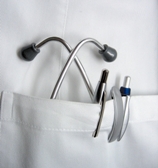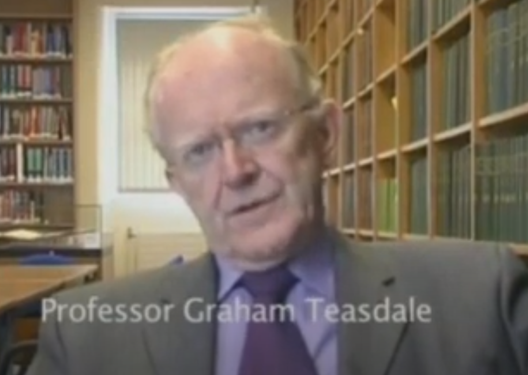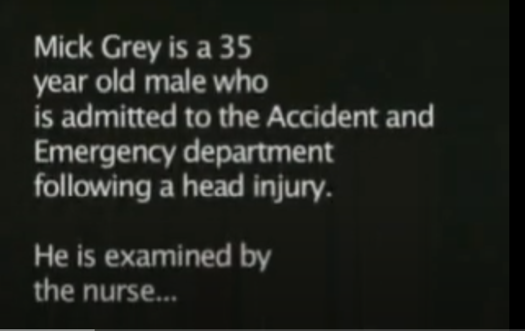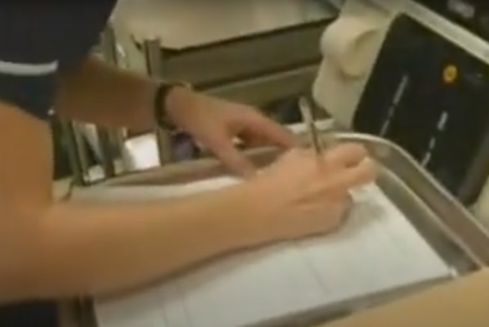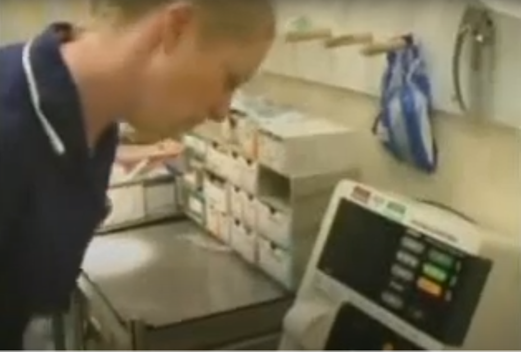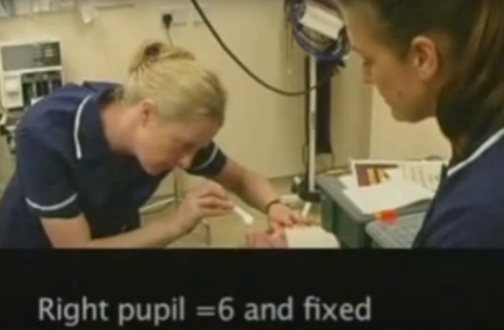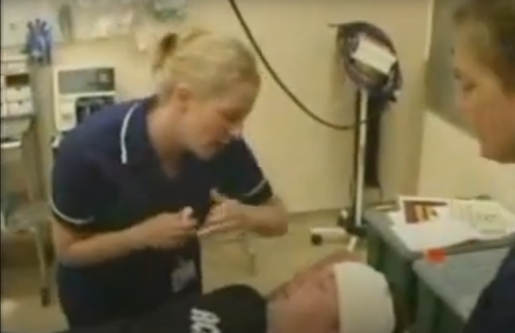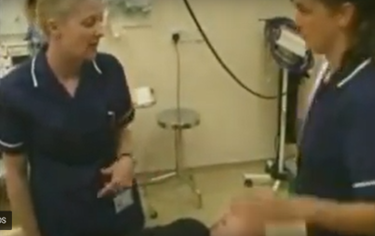20th Century
20th Century
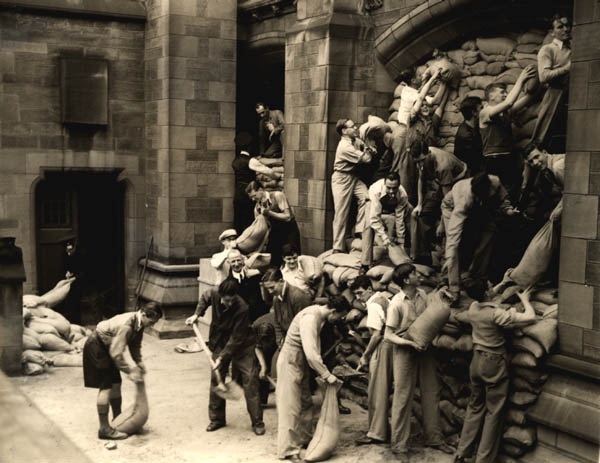
External events were to affect the Faculty of Medicine.
Medical men and women were caught up in two world wars at home and overseas.
Post-war, in 1951, the University celebrated its 500th anniversary, to much excitement.
The new National Health Service was created. Doctors were joined by dentists in 1948 and by nurses in 1977.
Leaving behind the 20th century, a radical new curriculum was introduced for the new generations of medical students for the 21st century.
Further teaching hospitals
The Victoria Infirmary
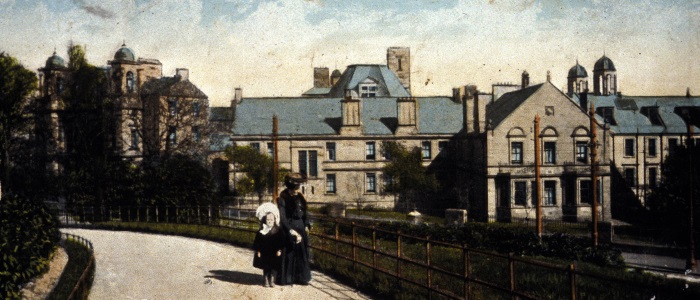
By the end of the 19th century, it was common for a new hospital to incorporate a teaching role in its plans for the future. In 1909, the Victoria Infirmary was thought to be underutilised. There was an increase in demand for clinical teaching places after the First World War, with men returning from the forces to resume their studies. The Victoria Infirmary was approached formally, and by October 1920, a clinical course was arranged and approved. Despite an active teaching role, the Victoria failed to become a base for the University.
A clinical base was founded at Stobhill Hospital, establishing the first university department in a municipal hospital and paving the way for Stobhill's emergence as another major teaching hospital.
The Royal Hospital for Sick Children
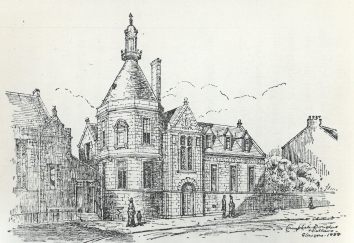
The first children's hospital had opened in Garnethill in 1883. Infectious diseases, malnutrition and tuberculosis were the scourge of childhood and Victorian funeral horses were seen daily on the streets. Services were free and marked the beginning of the open-door policy at the Royal Hospital for Sick Children.
Hector Cameron and Sir William Macewen were appointed surgeons. Cameron had also worked with Lister and the principles of antiseptic surgery were strictly enforced.
Their commonest emergency was the creation of an artificial airway for children choking with diptheria, then a palliative process with few recoveries.
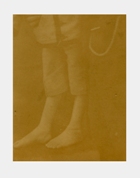
Gangrene, noma and cancrum oris were conditions associated with sepsis and malnutrition. Rickets, a nutritional disorder, was endemic (see image). An outpatient dispensary was opened nearby at West Graham Street and specialties in surgical and medical paediatrics developed. James H Nicholl of the Western realised the problems were caused by overcrowding and cross-infection and children were often sent home after an operation. By 1905, the accommodation was inadequate. He was performing outpatient appendectomies, rib resection, pioneering operations for pyloric stenosis and a thymectomy.100
In the hospital's annual report for 1905, Dr T Kennedy Dalziel had commented on the proposals for a new teaching hospital, that medical students nowadays had a very full course of training, but he did not think that they had sufficient opportunity of studying and becoming acquainted with children's diseases.101
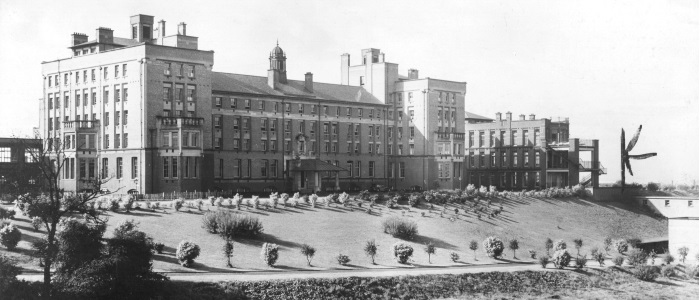
In 1908, Sir Donald MacAllister, Principal of the University, approved the motion to adopt 'the green slopes of Yorkhill' as a site for a new children's hospital. The Royal Hospital for Sick Children was opened on 7 July 1914 by King George V, though no progress could be made until after World War I.
In 1920, the formation of the Leonard Gow Lectureship on Medical Diseases of Infancy and the Barclay Lectureship in Surgery and Orthopaedics in Relation to Infancy and Childhood established Yorkhill's position as a teaching hospital, so that generations of medical students from home and overseas could learn to recognise promptly and treat effectively conditions that had formerly taken a heavy toll on children's lives.
There were corresponding advances in diagnostic and research facilities. In pathology (Muir and Blacklock), biochemistry (Noah Morris), paediatrics (Fleming and Graham) and childhood surgery (McLennan, Rankin and White). Following the Second World War, orthopaedics and neonatal surgery developed as distinct specialties (research in Child Health continues).102
Clinical teaching continues
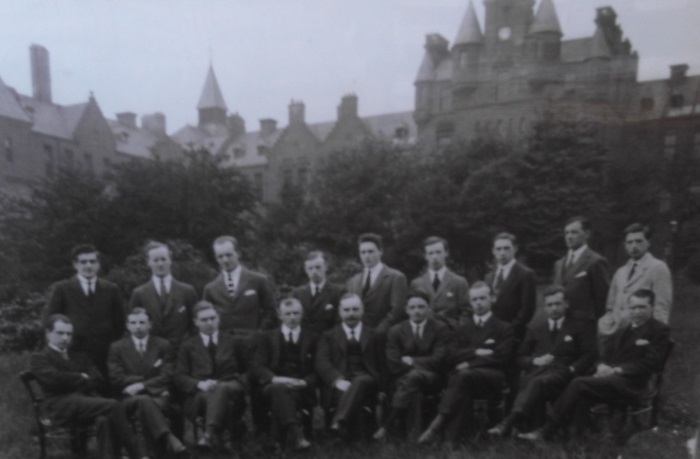
Clinical teaching continued at the Western Infirmary. Undergraduate and postgraduate systematic lectures were given at Gilmorehill.
The professors of medicine and surgery within the Infirmary had an academic role as clinical teachers and were equivalent to the chiefs. Chiefs had the University status of Honorary Clinical Lecturer.103
Before the Second World War, the medical staff was organised on an intensely hierarchical unit system. The Resident was appointed on the personal nomination of the Chief. ‘Rotation’ was introduced after the Second World War to provide a wider variety of experience. The official status of the Chief was reduced and was replaced by a consultant elected by his fellows for a stated number of years.
The first woman resident at the Western, Agnes Conway, was appointed in 1946, some years later than in other hospitals. Entry to an established career post was first achieved in pathology, where research work carried out by Muir and Browning was of the highest order. Janet SF Niven, the first female to win the Brunton Memorial Prize as most outstanding graduate, was appointed in 1933, though while she was there working on her thesis, she had overheard Muir remark that he would never have a woman on his staff.104
In the 1920s, acceptance of a student by a Chief was on a 'first come first served' basis. The posting at the University of the results of the second professional examinations would be followed by a race down the hill and through the wicket gate at 'Physiology' to enrol in the more popular clinics at the Western Infirmary. Every Chief and his staff knew exactly where they were ranked in the teaching league.105
Clinical teaching was varied due to the lack of specialisation at that time. The entire class would spend two mornings a week in theatre galleries watching surgical operations. Different clinics offered additional opportunities for experience in the wards, accompanying patients undergoing special radiological examinations, performing dressings, assisting at operations and attending when emergency patients were being received. Teaching accommodation was elementary, using side rooms or small lecture rooms.106
Further changes were made to the medical curriculum. Final-year 'intensive' students spent more time on the wards gaining clinical experience as understudies to the residents.107
"Work was extremely hard , the hours were unlimited and I was paid £26 for each six-month appointment."
Students in war time
During the war, staff and students were drafted into the armed services, leaving the Faculty of Medicine to be run by teaching staff who had retired or were unfit for service.108
A young student doctor observed medical conditions at the Western Infirmary in 1917. "Work was extremely hard, the hours were unlimited and I was paid £26 for each six month appointment". Between 1917 and 1918, there was one medically qualified doctor, JG McGregor, house surgeon to Sir William Macewen, and the rest were fourth- and fifth-year students. The armed services had also drawn on the nursing sisters, leaving younger sisters in charge.
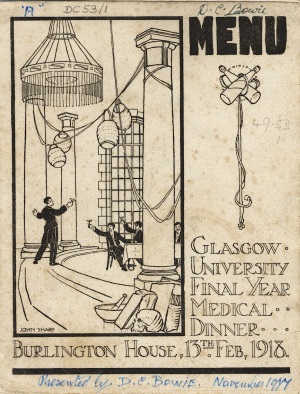
The students' final-year dinner at the end of their course reflected on the men who did not return – "the fallen, the unreturning brave" – in their programme.109
Dr Honoria Keer
For women, the First World War offered them an opportunity to move into areas they had previously been excluded from.
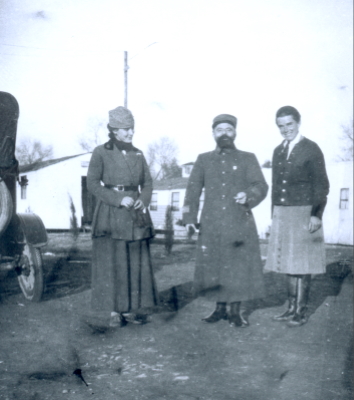
Dr Honoria Keer, a graduate in 1910, was in charge of a medical unit in Corsica to nurse Serbian exiles. In 1921, a Glasgow graduate of 1898 served with distinction as Surgeon-in-Chief in the United Scottish Women's Hospitals Foreign Service.
After a distinguished career, she came out of retirement and offered her services to aid the war effort in the Second World War.
A graduate and former staff member remembers being a student during the war years of the Second World War.
"Well, I was a student during the war years because I entered university in 1937 and things were a bit tight, shall we say, in general. And I always remember the sort of bad news that was coming out of France just at Dunkirk time, and battleships being sunk off Singapore when the Japanese invaded Burma. And altogether, it wasn't the brightest of times for an undergraduate, although at at times I thought I couldn't see the country surviving, but I always remember my father, for some reason or other, had complete faith that we would defeat Germany and win. And he was absolutely right. But there was no reason for it. But I was always struck by the older generation, who seemed to have a pretty stiff upper lip in those days, certainly a bit stronger than the one that I had."
"But I remember that as part of your voluntary duties when you were a student at university, you were taken on and given a lot of times to do warden along with a senior member of staff. You sat in some small room in the University, watching for aeroplanes or fires starting, so, you know, that was part of our voluntary exercise for the University as a student. I can still remember the air raids in Glasgow Clydeside, Clydebank. And also remember in Springburn I went down one night, nine o'clock, to the Royal Infirmary and they had casualties in the surgical operating theatres and the surgeon allowed us in and we helped deal with these. Just there weren't terribly many, nothing like the London Blitz, but at least you got a slight exposure to casualties in the time of war. But even the Royal Infirmary had nothing like what happened in Clydebank and again, Clydebank patients probably all went to the Western Infirmary at that time. But still, I saw one or two on one or two nights, it certainly kept your interest alive".
Graduates, (and former staff member) and were also students at this time. Professor Grist was a medical student volunteer attached to Pollokshaws Baths. Dr Chisolm recalls the community spirit despite restrictions and rations.
Post-War
Amalgamation of colleges and schools
With the advent of the National Health Service in 1948, the Goodeneough Committee recommended that undergraduate medical education should become university-based and the extramural schools should be abolished.115 Under the guidance of the Principal, Sir Hector Hetherington, Anderson's College and St Mungo's College became part of the University Faculty of Medicine and their buildings were used to house University medical departments. The Dental School also became part of the Medical Faculty, but continued to be based in the Dental Hospital.116
The Development of Medical Specialties 1948–2018
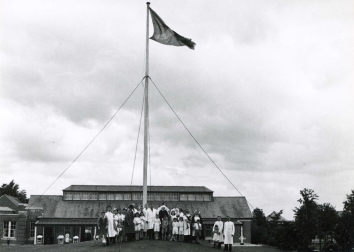
The second half of the 20th century saw the increasing specialisation of medicine as well as the growth of medical research and scientific medicine.
Latterly, evidence-based medicine, which is based on scientific data as well as clinical experience, evolved.
Fifth Centenary celebrations
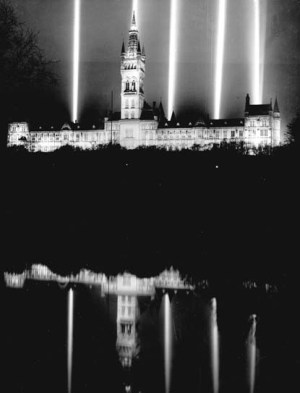
Many students and staff joined the University in celebrating its fifth centenary in 1951. A torchlit procession left Cathedral Square and made its way to Gilmorehill to a huge bonfire and fireworks display. Dr Lunt, at that time a dental student, remembers the splendid sight (still at a time of austerity) of “five great searchlight beams behind the University, one for each hundred years”. 117
The Glasgow Dental Hospital and School
The Glasgow Dental Hospital and School
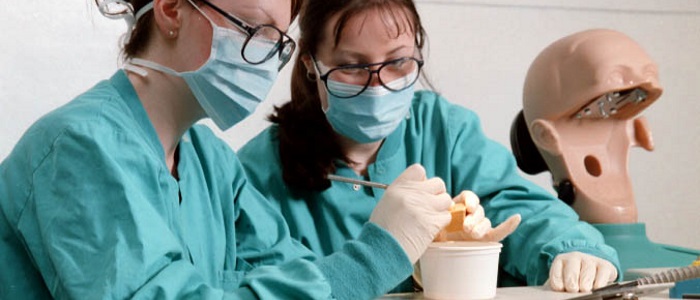
At present the Glasgow Dental Hospital & School comprises the 1931 building in Renfrew Street linked with a larger extension opened in 1970 with a front entrance facing onto Sauchiehall Street.
There are comprehensive up-to-date facilities for patient care, for student clinical practice and training, and for education and research in dental and oral diseases and disorders. It has been educating dental students since 1879, first for the Licence in Dental Surgery of the Royal College of Physicians & Surgeons of Glasgow then, since 1948, for the Bachelor of Dental Surgery Degree of the University.118
History of the Dental School
The School amalgamated with the University in 1947. Dental students enrolled for the degree course from October 1947 and the Bachelor of Dental Surgery and Master of Dental Surgery was approved in 1948. The University created a Chair of Dental Surgery and appointed James Aitchison as its first incumbent in 1951.
From 1947 onwards was a period of change for the medical and dental profession. The discovery and use of antibiotics created a revolution in the treatment of infections and the inauguration of the National Health Service heralded a new concept of medical and dental care.
The University 'take over' and the introduction of the Health Service gave dental graduates the opportunity to pursue new careers either in full time hospital service or in the academic field as University teaching and research staff.147
Dr Dorothy Lunt, the first person to be awarded the Master of Dental Surgery, was able to combine her interest in archaeology with her research work.
"I've always been involved with research from quite an early stage in my career. Once I had got past the very initial stages it was considered necessary to take the higher qualification of the Faculty of Physicians and Surgeons in Glasgow before you really went on any further. So I got my HDD [Higher Dental Diploma] in 1955. But after that I was expected then to engage on research. I thought at first of doing some research in histology because I was really very interested in histology. I liked looking down the microscope. But looking around the field, there seemed to be so many people already working in the field of histology."
"And the Dean called me down one day and asked you know had I decided on a subject for research, I was expected to do that. I said, "Well I was still trying to find a subject that wasn't already overcrowded with other research workers." And he knew that I was and had always been very much interested in archaeology. And he said, "Why don't you join up your work and your hobby and do some work on the teeth in skeletons from various different archaeological periods in Scotland?" And I thought to myself, "Well I bet nobody else is doing that".148
Teaching
Under the direction of Professor Aitchison, new full time teaching appointments were made in several departments. Until this time, students were largely taught by general practitioners who devoted much of their time to the work of the Hospital with little or no financial reward.149 Dr WM Gibson became the second professor in Dentistry when the University created a Chair of Dental Prosthetics in January 1960.150
The 1960s-1970s was largely taken up with the planning and construction of the extension to the Renfrew Street building. Increased obligations by the Health Service to provide more specialist services together with the new full-time teaching posts posed greater demands on office and research accommodation.151
Although a site near a large teaching hospital or closer to the University campus might have allowed closer affinity with dental and clinical medical work or closer contact with staff and students and other University activities, contacts were developed with medical colleagues at the University.
The Glasgow Dental Hospital and School's dual and interdependent role as a teaching institution and a centre for specialist dental service developed as the number of students, staff and additional professorial chairs increased. The existing BDS curriculum, which had been based on the older licence in Dental Surgery had restricted active clinical practice to the fourth and fifth years and was revised.152
In the late 1960s, the teaching and professional examinations of Medicine were brought forward into the fourth year of the course. Meanwhile the Faculty of Medicine considered a new curriculum, which would involve a completely new first year course. Dental and medical students traditionally had a common teaching and examination content in first year. In the medical curriculum, the teaching of anatomy, physiology and biochemistry would be introduced after Easter in first year, releasing teaching time in second year.153
For the dental student in the 1970s, the formal theoretical teaching was completed by the end of fourth year, allowing the fifth and final year to be devoted entirely to clinical dental training, topic teaching, poly-clinical and preparation for practice.154
A Post Graduate Dental Education Centre was opened in 1985 to further the needs of general practitioners, community dentists and hospital specialists. The first post graduate adviser was Professor David McGowan who built the centre into an efficient functional unit providing a wide range of services to graduates from home and overseas.155
Nursing in the Faculty of Medicine
Within the Faculty of Medicine, the Division of Nursing and Health Care (now the Nursing & Health Care School) has offered a degree course in Nursing Studies since 1977, introduced under the Dean of the Faculty of Medicine at the time, Professor Edward McGirr.156
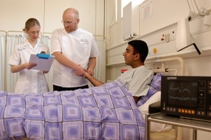
Following the report of the Briggs Committee in 1972 a new agenda for nursing and nurse education was set in motion. It sought to develop a career progression away from the bedside into education, management and research.157
The 1979 Nurses, Midwives and Health Visitors' Act provided the legal mechanism for change.158
There was a gradual movement away from practice based training towards a college based system of education, from the nurse apprentice to the supernumerary nurse.159 A Professor of Nursing Studies was founded in 1988 and Lorraine Smith was appointed in 1990.
Ms Olivia Brittain was Director of the Undergraduate programme and discusses the differences between a nurse graduate and a hospital trained nurse.
"Well I think that the major change that I see is when I went forward as a registered nurse, I probably was very confident in my skills but I hadn't the same depth of knowledge. Looking at our students today who are going to graduate in December [2006], they have a lot more depth of knowledge particularly about the science aspect of the course. They may be not so confident in their skills but we don't see this as a problem because they will develop that confidence in their first clinical placement or first post as a staff nurse. And as a new staff nurse they have changed legislation in that every new staff nurse in their first post, should have what's called a preceptor to look after them and that is really to help them develop both their knowledge in running a ward but also gain confidence in their skills, so there's somebody who will oversee them and they can go to them if they've got any problems. So at six months post registration I think we produce, not just ourselves but graduate degree programmes do produce a real good nurse who has both got the clinical and the theory behind what they're doing.179
Changes and advances
The 20th Century saw the development of hospital specialisation and the separation between it and general practice. Postgraduate education became more formal following the Todd Report, published in 1968. The West of Scotland Committee for Postgraduate Medical Education was based in the University, with representation from the Royal Colleges, the National Health Service and the University.180
Mr Mack, a retired surgeon discusses changes at the Victoria Infirmary and in Surgery.
Tremendous advances. In general surgery as I was, a General Surgeon has virtually disappeared. And although people have to do emergency work which means they have to have very broad base, the specialists are into vascular surgery, oncology, breast oncology, colo-rectal surgery, upper G-I [gastro-intestinal] and what you call, HBB, pancreatic, pancreatic and biliary. So it's very much focused now, much more than it was and that's a good thing. Although it's difficult in a small hospital to cover all these bits, all these specialties. But yes, big changes, and enormous changes in oncology and orthopaedics and transplant work.181
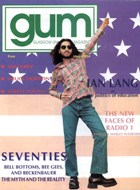
Training for general practice became formalised and in 1979 it became mandatory to undergo a three year course of supervised experience in relevant hospital specialties such as psychiatry, obstetrics, gynaecology and medicine as well as in general practice prior to taking up a permanent position.182
Dr Gail Addis, a GP recalls student life and changing fashions in the 1970s.183
Professor Sir Graham Teasdale joined the Faculty of Medicine and developed the Glasgow Coma Scale (referred to in many a medical drama) along with fellow neurosurgeon and academic Professor Brian Jennett, a globally-recognised scale of consciousness in head injury patients in 1974 (read more in Neurosciences). He is also a past president of the Royal College of Physicians and Surgeons of Glasgow.184
Head injury assessment
This is a short clip of a film produced by Dr Jake Timothy in which Professor Sir Graham Teasdale discusses the history of the Glasgow Coma Scale.
Followed by a patient scenario set in casualty shows which shows the Coma Scale being implemented by medical staff.
The Glasgow Coma Scale turned 50 in 2024.
With thanks to Dr Jake Timothy (film © Dr Timothy), Sir Graham Teasdale and the Hunterian Museum and Art Gallery.
See the full scenario and find out more about medicine and research today at the Hunterian Museum's exhibition, a Healing Passion.
New curriculum
New curriculum
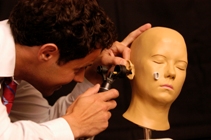
Following the General Medical Council's recommendations 'in Tomorrow's Doctors', the medical curriculum was radically restructured based on individual learning contracts, and problem-based learning techniques.
Their emphasis moved on from gaining knowledge to a learning process that includes the ability to evaluate data as well as to develop skills to interact with patients and colleagues.185
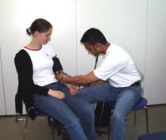
The new curriculum was developed in response to the GMC's call for learner-centred education to promote independent, critical thinking, with assessment linked to outcomes, and the application of computers to medicine.' In this innovative programme, all medical students are introduced to clinical scenarios from the very beginning of their education. The course optimises learning by helping students to activate relevant prior knowledge in a context that resembles the future professional situation as closely as possible.
The curriculum also features IT as a major vehicle of instruction and all students are required to qualify for a Certificate of Basic IT Competence.
A one-year intercalated BSc (Med Sci) in Clinical Medicine (or two-year BSc Hons) provides a component of the scientific underpinning, complementing the input from the curriculum.
Dr Selena Gleadow Ware, part of the second year intake of the new course who graduated in 2003 gives her view on the new course.
I think generally at Glasgow University, we had quite good fun on the course at that time. We were the second year of the new course, and I think the University were just kind of getting to grips with how it was all working which probably meant they were a bit easier on us than they have been on years subsequently. So it meant that we could be really flexible in kind of our own approach to learning and studying which was I think helpful in terms of motivating yourself but also in terms of being able to arrange your social life.186
For the lecturer, it was also a new challenge which Professor Mackie enjoyed.
"I've always enjoyed teaching, both undergraduates and postgraduates. And watching the new curriculum develop has been very interesting, very stimulating. Nowadays so much of the teaching is done in small groups with problem solving exercises. I find it interesting and stimulating to teach and I think the students find it interesting and stimulating to learn. They no longer have to learn a lot by rote but they work it out for themselves. And I find that creates a very nice atmosphere between student or learner and teacher, where everyone is discussing things together. And I think the success of the new curriculum is very obvious when you look at the number of people who want to study medicine in Glasgow. The word has obviously gone around that it's an interesting, lively and good place to be. And I would agree with all of these things."187
World changers welcome - what's it like to be a student at the University of Glasgow?
NHS and Medical Education has continued to evolve over the years.


